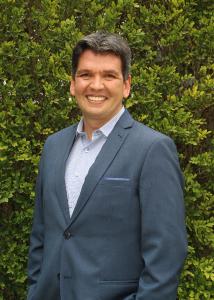Event reports
Inauguration
The Congressman Armando Villanueva (President of the Energy and Mines Commission) highlighted the inevitable increase of energy demand, and that this should be covered by renewable energy, following the example of the developed countries, as well as of the Latin American neighbors (for example, Chile and Costa Rica). This transit to renewable energy must be gradual, constant and sustained, using the natural gas resource as a “hinge” between oil and renewable energy. In turn, this transition must be based on auctions to avoid false prices or excessive pressure on the public funds and it must be accompanied by an efficient use of energy, something that we do not have at the national and regional level.
Then Mrs. Ana María Gutiérrez (Academic vice-president of UNSA) took the floor and highlighted the work carried out by the academy in Arequipa. She mentioned that it is committed to environmental education as a line of work and indicated that it currently has an agreement with Concytec and Active Science, and is working with mining canon funds in the development of projects and knowledge to achieve climate change mitigation and adaptability goals.
Finally, Mr. Benigno Sanz (Manager of the Environmental Regional Authority of GRA) indicated that Arequipa (along with Cusco and Piura) is working in a regional environmental management system in coordination with CEPLAN and MINAM. Arequipa has as its goal the water security (construction of micro dams to recover aquifers and wetlands), conservation of biodiversity (especially the Colca condor and the Tara forests), put emphasis on the environmental management tools (EIA, DIA) accompanied by an efficient and transparent monitoring and inspection.
The Regional Government also has research agreements with the UNSA to update the strategy against climate change (the first region in considering this strategy at the national level), as well as the initiative of “smart” buildings with the use of renewable energy.
Presentations
Climate change and renewable technology
Pedro Gamio, Energia Renovable Peru
Natural gas must be used where its use is more efficient: transportation, homes, industry as it is performed in the developed world, and more water, wind, sun, biomass and geothermal science must be applied to the power generation.
“There is no doubt that power generation with renewables is cheaper, now what has to be done is to decentralize the infrastructure favoring connectivity”, he said.
Arequipa has enough resources to “export” energy to other regions, the country has a rich potential to take advantage. That is why we must make steady progress.
According to a COES technical report, 20% of the Peru's energy matrix could be with alternative renewable energy (currently it is 3%), then there is a need to make progress, both to gain more energy efficiency in order to make our small and medium-sized enterprises more competitive and to work on territorial planning in order to recover green areas, to achieve the sustainable development and to meet the global emission reduction commitments. It is urgent to have a solid internal agenda, a road map to be achieved in the regional and local governments.
Energization for development: An experience of implementation of technologies in renewable energy
Urphy Vásquez, INTE - PUCP
The INTE is the governing body in environmental matters in the PUCP, which, among several issues, see rural energization as an agent for development. The INTE's mission is to design, develop, implement and manage technology aimed at solving social and environmental problems, generating social and economic dynamics of social inclusion and sustainable development. Linking the generation of systemic problem solving skills, before specific problem solving, is called “Social Technology” that reaches a wide range of technology productions of product, process, services and organization: food, housing, energy, drinking water, transportation, communications, among others.
Arequipa has a great potential in renewable energy, the link between its use and the eradication of poverty is a new concept that is being used at the world level. The aim is to meet the energy demand of any useful type of energy, not only of electric power, because it is common to hear and read that “the energy matrix at the national level” has a strong urban and electric bias; but there are other energies, such as thermal and mechanical energy which are necessary to have a development process and satisfy the levels of quality of life of the population.
In Peru, there is a regulated public policy for the promotion of renewable energy, which is summarized in:
-Diversified energy matrix, with emphasis on renewable energy and energy efficiency
-Power supply for sustainable development
-Universal access to power supply
-Greater efficiency in energy use (supply and demand)
-Self-sufficiency in energy production
-Minimal environmental impact
-Development of the natural gas industry
-Stronger institutions
-Be part of the regional energy markets
It is true that a positive evolution can be demonstrated in the coverage of rural electrification in Peru, which from 28,2% in 2005 has risen to 78% by the end of 2015. Thus, we can appreciate an increase of almost 50% of rural power coverage in the last decade, while in urban areas the increase has been only 20% during the same period.
However, there is still a gap of 22% for the rural area (the most difficult, due to geography and access to populated areas). Given this situation, the State has launched an auction to assist the most remote populations with photovoltaic systems.
Potential use of solar energy
Marcelo Neira – Manager of Energia Innovadora
Energia Innovadora, as a member of the private sector that promotes the use and commercialization of EERR in Arequipa, presented its range of products that adapt to the infrastructure of houses, institutions and land; and being the isolated photovoltaic products not connected to the network the most commercialized, but he also explained that the systems where batteries are connected to the network would solve problems in emergency situations such as those being experienced in Peru due to the attacks of “El Niño Costero” phenomenon.
Plenary session for the preparation of the “Network of Citizens of Arequipa in relation to Climate Change”
After an intense discussion, we can conclude that in Arequipa the following is necessary: -Economic, regulatory and savings incentives:
-Education in values, “environmental literacy”.
-Intensive environmental diffusion “door to door” to create life commitments.
-Articulation among sectors for adaptation and mitigation to climate change (public, private, academic and civil society).
-Territorial planning and urban planning, efficient management of solid waste, sustainable transportation and smart buildings.
-Proactivity in environmental management, with strategic environmental assessments.
-Transfer of technology and socialization to give value to the decentralized centers.
-Public officials with sense and concept of work teams.
Actions the multiple institutions and civil groups present committed to carry out together, mentioning the regional Government, Municipality of La Joya, Municipality of Cerro Colorado, UNSA, UNAP, INCOP, Honorio Delgado Institute, Frente amplio cívico de Arequipa, Ceder Mujer, Innovanza SAC, Agrorural, the network of young leaders of the South with energy, ecology and life, among others. Soon they will send us their reports and road map. A coordinating committee of the platform was formed.
You can review the following links:




